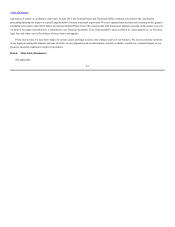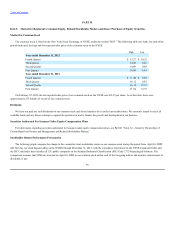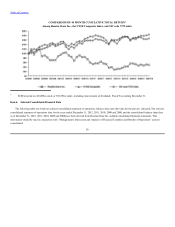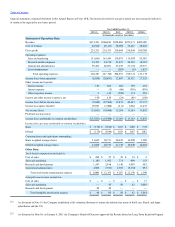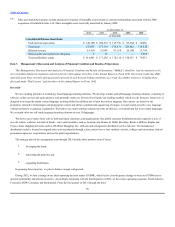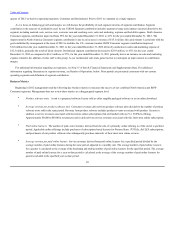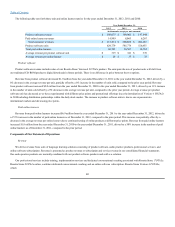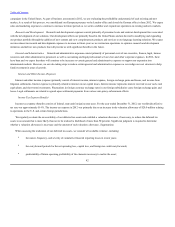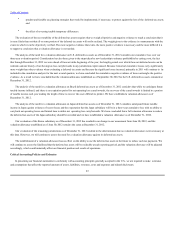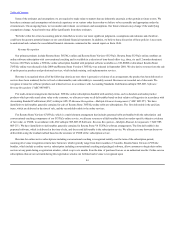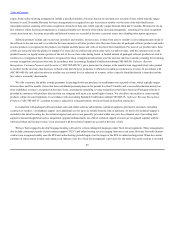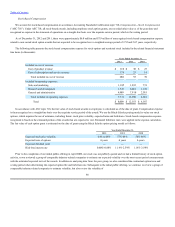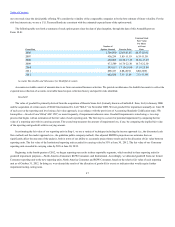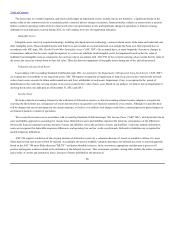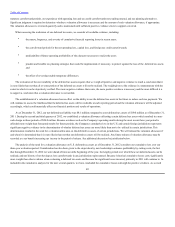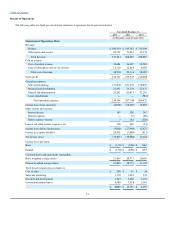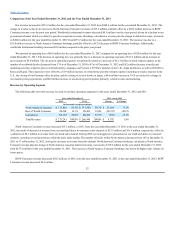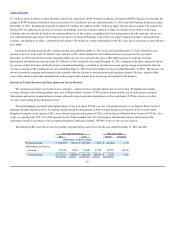Rosetta Stone 2012 Annual Report Download - page 46
Download and view the complete annual report
Please find page 46 of the 2012 Rosetta Stone annual report below. You can navigate through the pages in the report by either clicking on the pages listed below, or by using the keyword search tool below to find specific information within the annual report.
Table of Contents
•prudent and feasible tax planning strategies that would be implemented, if necessary, to protect against the loss of the deferred tax assets;
and
•the effect of reversing taxable temporary differences.
The evaluation of the recoverability of the deferred tax assets requires that we weigh all positive and negative evidence to reach a conclusion that it
is more likely than not that all or some portion of the deferred tax assets will not be realized. The weight given to the evidence is commensurate with the
extent to which it can be objectively verified. The more negative evidence that exists, the more positive evidence is necessary and the more difficult it is
to support a conclusion that a valuation allowance is not needed.
The analysis of the need for a valuation allowance on U.S. deferred tax assets as of December 31, 2012 considers our cumulative loss over our
three-year evaluation period. Consideration has also been given to the steps taken by new leadership to enhance profitability by cutting costs, the fact
that through December 31, 2012 we were ahead of forecast at the beginning of the year, the lengthy period over which these net deferred assets can be
realized, and our history of not having tax loss carryforwards in any jurisdiction expire unused. Because historical cumulative losses carry significantly
more weight than other evidence when evaluating a deferred tax assets and because the significant losses incurred, primarily in 2011 will continue to be
included in the cumulative analysis for the next several quarters, we have concluded the cumulative negative evidence of losses outweighs the positive
evidence. As a result we have concluded that the valuation allowance established as of September 30, 2012 for the U.S. deferred tax assets remained at
December 31, 2012.
The analysis of the need for a valuation allowance on Brazil deferred tax assets as of December 31, 2012 considers that while we anticipate future
taxable income in Brazil, and there is no expiration period for net operating loss carryforwards, the recovery of the carryforwards is limited to a portion
of taxable income each year making the length of time to recover the asset difficult to predict. We have established a valuation allowance as of
December 31, 2012.
The analysis of the need for a valuation allowance on Japan deferred tax assets as of December 31, 2012 considers anticipated future taxable
income in Japan against evidence of recent losses and the expectation that the Japan subsidiary will be in a three-year cumulative loss with no ability to
carryback net operating losses and limited time to utilize net operating loss carryforwards. We have concluded that a full valuation allowance to reduce
the deferred tax assets of the Japan subsidiary should be recorded and we have established a valuation allowance as of December 31, 2012.
Our evaluation of the Korea subsidiary as of December 31, 2012 has resulted in no change to our assessment from June 30, 2012, and the
valuation allowance established as of June 30, 2012 remains the same at December 31, 2012.
Our evaluation of the remaining jurisdictions as of December 31, 2012 resulted in the determination that no valuation allowances were necessary at
this time. However, we will continue to assess the need for a valuation allowance against its deferred tax assets.
The establishment of a valuation allowance has no effect on the ability to use the deferred tax assets in the future to reduce cash tax payments. We
will continue to assess the likelihood that the deferred tax assets will be realizable at each reporting period, and the valuation allowance will be adjusted
accordingly, which could materially affect our financial position and results of operations.
In presenting our financial statements in conformity with accounting principles generally accepted in the U.S., we are required to make estimates
and assumptions that affect the reported amounts of assets, liabilities, revenues, costs and expenses and related disclosures.
43


